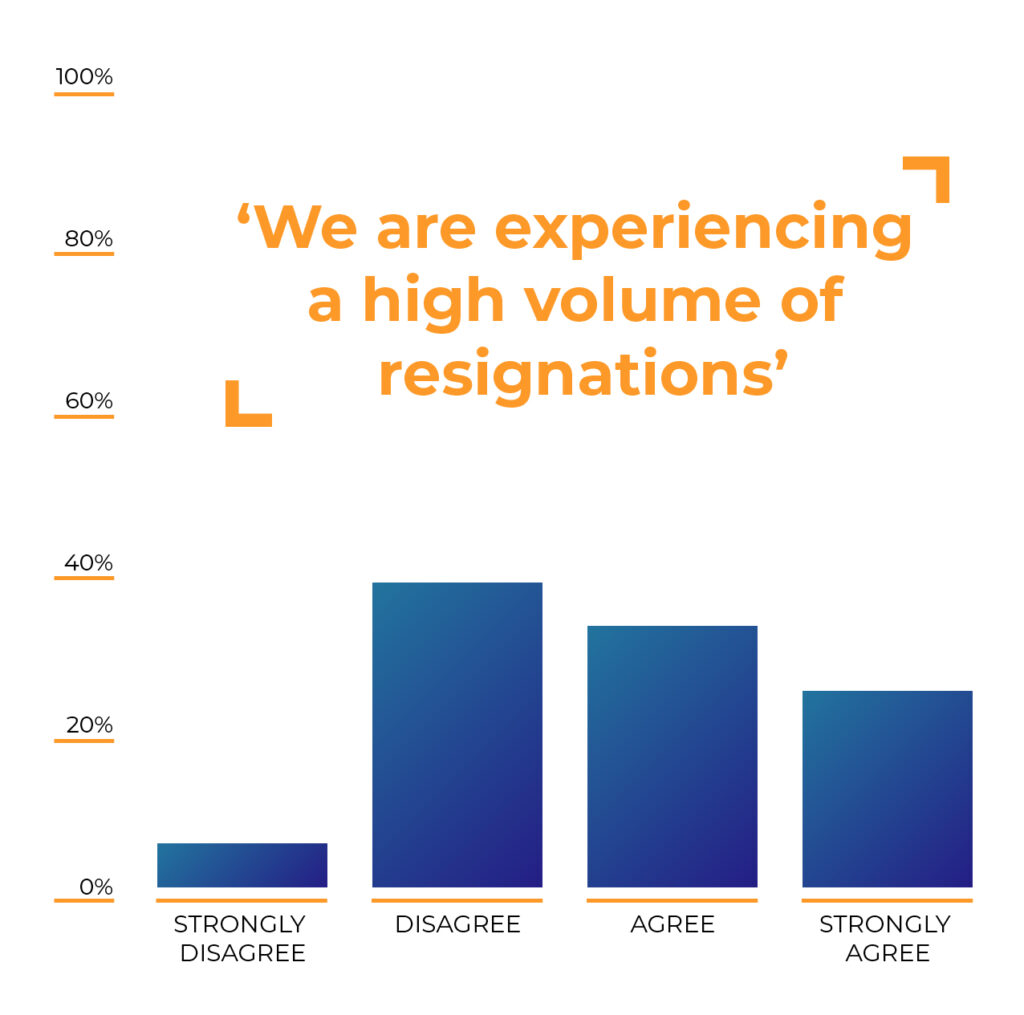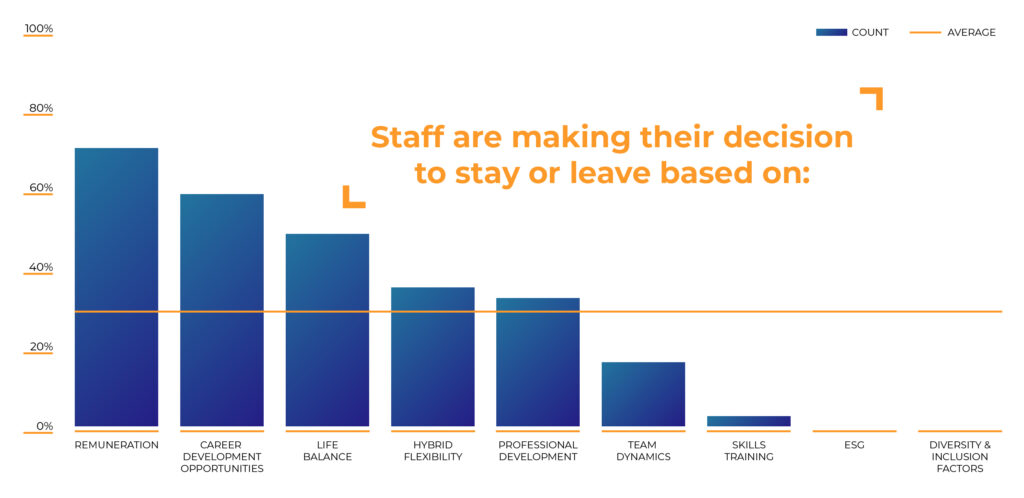Next month a senior HR leader at an ASX 50 company—let’s call him Sam—begins his new job with a global tech giant. The new role is a step up in his income and in his prospects for development, with his induction process involving a trip to Silicon Valley later in the year.
The potential for salary increases and career development are two of the major factors driving the correctly predicted rise in resignations that companies are now facing. However, it was neither salary nor development that caused Sam to jump ship.
Sam works for a company that is considered an Employer of Choice, and he has always found his current role rewarding. Yet the hype surrounding the Great Resignation earlier this year piqued his interest in the jobs market: “I decided to put my head above the parapets to see what was happening,” he told us. “I was concerned that I would be missing out.” For Sam, at least, the concept of the Great Resignation turned out to be a self-fulfilling prophecy.
Our own survey of 40 Australian companies, shows that the exodus of staff is playing out as anticipated. More than half the respondents said that they are experiencing a high volume of resignations – and 9 in 10 said they are struggling to fill roles:


Economic and market conditions, together with the pandemic-induced shifts in how we think about work have created a hostile environment for leaders looking to retain talent. Given this reality, we believe leaders need to be taking a long-term (rather than reactionary) response to retention. Here are three pitfalls to avoid:
Pitfall #1: Taking a Transactional approach to Development
Our research of Australian companies suggests that remuneration is the biggest drawcard for people quitting their jobs in the Australian market. See image below:

However, most leaders in our survey also said they can’t compete meaningfully on salary. That means that these same leaders need to be reaching for some of the other levers that drive retention—such as providing career development opportunities and professional development.
There have been a number of studies that demonstrate a powerful connection between professional development, engagement and retention.
However, the pitfall to avoid here is taking a transactional approach to development, i.e., “We develop our people because we want them to stay.” The problem with this approach is twofold: if someone leaves, 1. the investment in professional development leaves with them, and 2. it creates the impression that the development initiative has failed.
A more long-term approach to development says, “We develop our people to create a culture of learning and growth.”
Research from Deloitte shows that companies with a strong learning culture have retention rates that are 30–50% higher.
Pitfall #2: Panic Hiring
Creating career opportunities longitudinally and creating a culture of continuous learning also helps avoid another pitfall in a talent shortage: Panic hiring. Leaders are needing to walk a tightrope of decision making right now. If they replace newly vacant roles too quickly, or leapfrog steps in the hiring process, they run the risk of making a bad hire, which can be costly and damaging to the organisation.
On the other hand, leaving a position vacant for too long can create an extra burden for existing team members, exacerbating the risk for further departures through stress and burnout.
Finding the right balance between the two approaches is critical.
Pitfall #3:
Not taking into account “the Boomerang Effect”
There’s another reason to resist the temptation to rehire too quickly.
In a study of more than 2,500 employees, the US-based job search website, Muse found that almost three-quarters of those who had recently changed job experienced either “surprise or regret” that the new position or new company they left their job for turned out to be “very different” from what they were led to believe. Nearly half of these workers said they would try to get their old job back as a result of the phenomenon that Muse is calling “shift shock”.
In our own study, “shift shock” – or “the boomerang effect” as we like to call it, seems to also be playing out here in Australia too. One HR leader shared with us she has been receiving multiple messages from recent employees asking for their old jobs back. They told her they wanted to return to the more empathetic and inclusive culture that they had left.
What connects each of these pitfalls is that they can all be addressed through following a crucial leadership discipline: having regular, quality one-on-one career conversations with team members.










